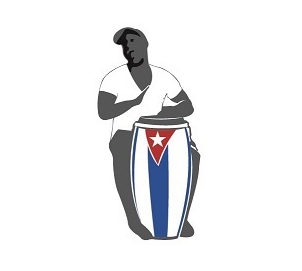Casino Español: from Lavish Ballroom to Provincial Library
I must have walked by this building a dozen times without fully appreciating its presence. It wasn’t until I was sitting at Cafe San Severino, a second-floor restaurant across the corner from it, that I finally noticed the name ‘Casino Español’ etched in stone above the arched windows.
I wondered what a Spanish casino would have been like during its heyday.
It’s one of the most spectacular buildings in Matanzas but it hasn’t been fully open in all the years I’ve been visiting the city. It’s easy to miss when you’re preoccupied with the noise and commotion on that typically busy stretch of Calle Contreras, between Santa Teresa and Ayuntamiento.
I was lucky enough to wander around inside accompanied by an elderly Cuban gentleman in charge of watching over the place, before the first level was closed for renovations. It looked like some sort of library but the furnishings were so sparse I couldn’t quite wrap my head around how it functioned. I didn’t speak enough Spanish back then to solicit, much less understand, an explanation of what I was seeing.
It was rainy that day, the air was damp and the interior smelled of musty old book bindings and antique wood. There were a handful of aged wooden library stacks, beautiful ornate columns and chandeliers hanging from the high ceiling. Down the centre of the room was a row of tables piled high with hundreds of very old books that looked like they’d been untouched for decades. They were covered in cobwebs and insects and bird feces. The guard watched me closely as I took out my camera to snap a few photos of the architectural details, but he gave me an emphatic finger-wave when I asked permission to include the tables in the frame.
The magnificent Carrara marble staircase leading to the second floor was sandwiched between two walls which I’m certain were not integral to the original design. Whatever retrofit they were part of did more to hide the beauty of this incredible feature than to enhance it. The second floor was similar to the first in terms of space and function – there were books, shelves and a few tables where a handful of people were reading and working quietly.
I wanted to know the history, but nobody I knew at the time could provide it. It’s remarkably difficult to find good information about Cuban cities, outside of Havana and a few of the more popular tourist destinations, online or anywhere else. After mining for details, I was finally able to piece together a snapshot of the back story behind Casino Español.
Initially called Principe Alfonso XII Casino, it was constructed around 1864 as a single storey building in the Neo-Renaissance style. With a grand ballroom and several galleries leading off of it, a billiards room and balconies overlooking the hall below, it served as a meeting and entertainment venue for the wealthy members of society at the time. It was a place where distinguished Matanceros could indulge in events which kept them culturally connected to their homeland of Spain.
In 1897, the building was destroyed by fire but was rebuilt in 1901. This time it had a second storey, topped with the royal Spanish Coat of arms cast in stone and flanked by two terra cotta lions brought from Barcelona.
In 1962 (just a few years after the start of the Revolution), the Gener y Del Monte Library, believed to be the first public library established in Cuba, relocated into the building where it remains to this day. Tomás Gener Bohigas (a politician involved in the civic development of Matanzas) and Domingo Del Monte (a lawyer and Cuba’s first literary critic) were instrumental in the foundation of the library, hence the name.
The stone frontispiece above the second floor will forever read ‘Casino Español’ but the bronze plaque beside the main entrance reads ‘BIBLIOTECA GENER Y DEL MONTE’. I understand now that this library held some of Cuba’s most valuable and rare book collections, so it makes sense that I wasn’t allowed to photograph those buried under the cobwebs. I wonder how and why such precious objects would be allowed to deteriorate to such a state, and for so many years.
There’s a hint of sadness at the thought of all of that beauty in decay.
However, being present in such a grand space and surrounded by architectural details of the period, something else comes to mind as well. Imagine the ballroom filled with elegantly dressed ladies and gentlemen gliding across the marble floors to Miguel Failde’s famous danzón composition ‘Las Alturas de Simpson’. That’s how the high society of Matanzas would have rolled back in the early 1900’s.
This historic site has been in a constant state of repair and renovation for at least the past six years. If there is a timeline for completion, and if it’s anything like that of Teatro Sauto, it will be another three or four years before we’re able to enjoy the finished product.
That doesn’t mean you can’t stop and wander around inside if you’re walking by someday and the door happens to be open. If nothing else, it will always be a beautiful work in progress.
